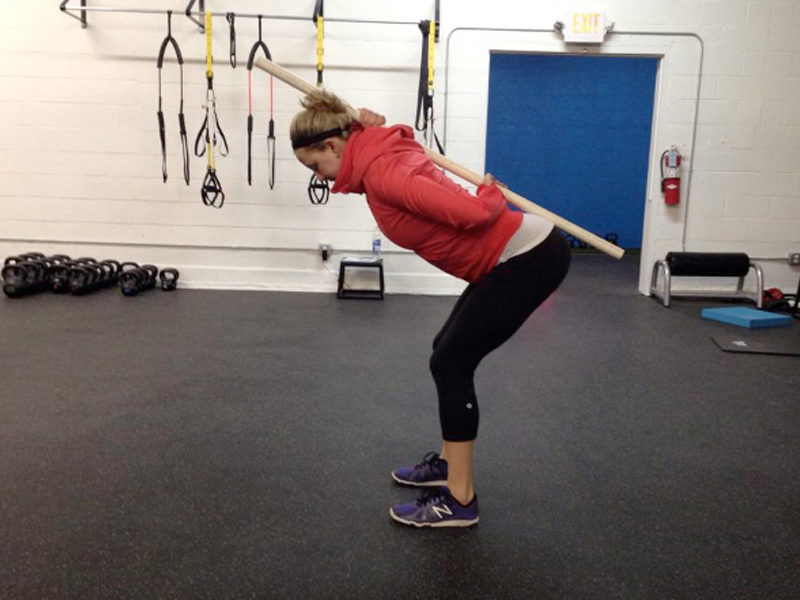Qualify. Pattern. Grind. Practice/train.
When it comes to exercise selection, you would think that common sense would go a long way. Unfortunately, that’s not always the case.
Let me start with this. If an athlete is constantly getting injured due to workouts with his/her strength coach, the athlete should fire the coach immediately. Strength coaches should help you get more mobile, stronger, increase resiliency and improve your overall conditioning. A strength coach should never injure you.
Any meathead can make you tired. It’s really easy actually. Just have someone perform high volume exercises and drills with limited recovery. This is where things go wrong and people get hurt. Performing countless hours of burpees and jump squats will only make you tired, sore and yes, potentially injured.
When I start off with a new fighter, the list of exercises I use for energy system work is pretty small:
- Battling ropes
- Airdyne
- Sled work
- Hill sprints
Yup, that’s it!
Why? For the most part, these exercises are safe, effective and excellent for “systemic conditioning.”. There is a learning process of about two minutes, but any fighter should be able to perform these with ease and you can’t really get injured with these drills.
There are hundreds of exercises I could use so obviously there needs to be a process involved in exercise selection. So what’s the process? I’ll walk you though the process of teaching athletes the kettlebell swing and how to apply it safely and effectively.
1. Qualify
I’m a huge fan of the Functional Movement Screen (FMS) and I use it with every one of my clients. Gray Cook, the founder of the FMS, constantly says “Move well, move THEN often.” This is a great system to “qualify” exercises for your athletes.
The FMS gives you incredible direction when it comes to programming. If you do not have the mobility and stability to even get into a good starting position, you are setting yourself up for failure if you move straight to an exercise.
Here’s an example:
Let’s say you want to perform a kettlebell swing, can you do the following?
- Touch your toes.
- Stabilize you lumbar spine, pelvis and ribcage.
- Extend your hips without hyper-extending your lumbar spine.
- Own a good active straight leg raise pattern. In the FMS world, this would be a score of 2/2.
Check out www.functionalmovement.com for more info!
If you cannot do the things in the list above, the kettlebell swing will eventually bite you in the ass and you guessed it…you could potentially get injured.
If you want to use the kettlebell swing as a tool, great! Just own the prerequisite movement patterns first.
2. Pattern
 So you are a 2/2 on the active straight leg raise and you can touch your toes, whats next? Let’s learn the pattern and lock it in!
So you are a 2/2 on the active straight leg raise and you can touch your toes, whats next? Let’s learn the pattern and lock it in!
The hip hinge or deadlift pattern comes next. A great way to pattern this is with a dowel placed vertically on the spine. There should be three points of contact, the back of the head, upper back, and sacrum. When you move into your hinge, your goal is to keep the dowel touching those three locations through the whole movement. You can also add in the biomechanical breathing match at this point. Breath in through your nose as you hinge, and “hiss” air out when you perform the lockout.
Once you nail 50-100 of these perfectly, its time to move on to the kettlebell deadlift!!
3. Grind
This is where the kettlebell deadlift comes into play. The kettlebell deadlift is a perfect way to train the hip hinge with an external load. A few new things are added into the equation during the kettlebell deadlift – grip, lat tension and enough core stability to resist spinal flexion or hyper-extension. A great way to train the kettlebell deadlift is in multiple sets of 5 reps.
The kettlebell deadlift will reinforce technique and keep fatigue at bay. PLEASE don’t overlook this step! If you cannot deadlift the kettlebell correctly, the swing should not happen!
4. Practice/Train
You might notice that I put practice and train together. That was done intentionally. When acquiring a new skill, I like to treat it as practice. When you approach each set and rep with skill development as a priority, good things will happen.This where the learning happens! During practice, it’s time to nail down technique and work out the kinks. You need to practice proper timing, balance of tension and relaxation, and coordination.
 If you want to use the swing as a conditioning tool, please check out this post on how to get good at programming from StrongFirst!
If you want to use the swing as a conditioning tool, please check out this post on how to get good at programming from StrongFirst!
This is a great program that incorporates practice, smart programming and will slowly introduce you how to safely manage fatigue with the swing.
Remember, the first rule of being a strength coach is DO NO HARM! Train smart and Train hard!!

